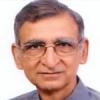The ghastly incident in Rajsamand, Rajasthan, (December 6) showed the impact which ‘Hate other’ can create. On December 6th, Shambhulal Regar, an ex-marble trader hacked to death a Muslim worker Afrazul Khan. Afrazul, a laborer, was called by Shambhu on the pretext of giving him some work. Many immigrants like him from West Bengal have been staying in Rajsamand working on construction of roads and other sundry occupations. The horrific part of the incident was that Shambhu got his 14 year old nephew to shoot the incident on video and then to upload the clip. The incident must belong to hate crime of the worst order. Killing with axe then burning the body and video shooting it!
While Shanbhu has been arrested, degree of support for such crimes is also becoming visible. One lawyer has offered Rs 50000 to Shambhu’s family. Country wide nearly three lakhs have been collected for his family. One Updesh Rana of Hindu Sanatan Sangh, a rightwing group, has been arrested as he had called for a rally in support of Shambhulal Raiger in nearby Udaipur. Police had to disperse the crowds assembling in support of Shambhu. Many more are looking up to Shabbhulal as a hero. This incident reminds one of the deeds done by Dara Singh (Rajendra Singh Pal), an activist belonging to Bajrang dal, who had burnt Pastor Graham Stains in Orissa. Upholding these acts of killers by large sections who are sympathizing with these crimes just goes to show the spread of ‘Hate ideology’, worsening by the day.
PUCL report on the incident says that Shambhulal was “a clone of the RSS hate factory and indulged in the gruesome hate crime.” Frightened by the crime many Bengali immigrants have left for their state. This act seems to be even worse than the killing of Pastor Stains, who was burnt alive by Dara Singh. At that occasion the then President of India K.R. Naryanan said that the “The killings belong to the world's inventory of black deeds". Dara Singh was active in Hindu right wing groups and was eulogized by a section of Hindu communalists; they also fought his case and worked for reducing his death penalty to life imprisonment.
Shambhu has been a marble trader, fairly successful as per accounts. His business got a setback after the demonetization and he started spending more time on ‘whatsapp’ and became active on social media. As per what he said in the video, he was full of hate for Muslims mainly as he perceived that love jihad by Muslim men is luring Hindu women, which he felt is the danger to Hindu community. He shouted the terms Babri Masjid, Padmavati, love jihad on the video and called for revenge against ‘these people’.
Some ideologues are trying to compare this act with the murder of a Hindu boy in Karnataka, who was castrated also. It is true that society is witnessing different hate crimes. While some non Muslims also suffer, the major victims of these are religious minorities and dalits. Still the major brunt from last some time is being borne by the Muslim community. The communal violence, the intensity of which has been worsening during last few decades takes place mainly as the divisive ideology has been dominantly increasing in degree during this period and has been going up exponentially during last three years in particular. One does recall the seeds of this ideology do come from colonial period, the roots of which lie in false perceptions about forcible conversions, jizia tax and temple destructions among others. The misconceptions have been intensified and new grounds have been prepared for adverse propaganda promoting hate. While the earlier misconceptions have been there, the global terrorism, with roots in politics of oil, has worsened the scenario.
In India from the decade of 1980s, so called appeasement of Muslims, personal laws, their illiteracy, poor hygiene, large families have been used in a negative way to paint a dark picture of the community. While Christian demonization is structured around conversion, the Muslim demonization has gone in to add to the issues of Holy cow, (beef eating and cow slaughter), love jihad, ghar wapasi to name the few.
What has changed during last few years in the understanding of the likes of Shambhu and killer of Akhlaq, Pehlu, Juned or floggers of Una, is that they feel empowered due to the utterances from those in power. The subtle message percolated down is that it’s ‘their’ government and they can get away with the heinous crimes. When Central ministers come and put tricolor on the body of accused of the murder of Akhlaq, what message will go down? The honor conferred on the murder accused of Akhlaq is what promotes a Shambhu to come forward and engineer the crime of the nature unheard of in the near past.
Equating of this ghastly crime with some other murder in Karnataka is to distract the attention from the basic issue of growing communalization, the spread and intensity of ‘Hate other ideology’ constructed around emotive issues. While law should be enforced, what about the propaganda, rumors which have been percolated and are being spread through the especially set up media cells employing hundred of youth to spread the divisiveness? What message the potential Shambhu’s get when they know that not only our Prime minister is calculatedly keeping quiet on such crimes, he also is the follower of the peddlers of hate on the Twitter etc.?
The country which had witnessed the coming together of people of all religions through development of interactive vibrant culture all through the history, with contributions from people of all the religions, the country which witnessed people of all religions rubbing shoulders during the freedom movement of the country, needs to be brought together yet again and Hate and misconceptions generated by the ideology of religious nationalism of the likes of Roger and Updesh Rana need to be overcome by the humane morality inherent in different religions.






Comments
Add new comment